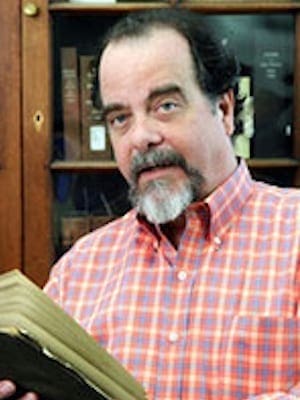Hopes and fears. Phillips Brooks got it right. The end of Advent and the celebration of Christmas should too. Our world is not so different from the world described by Luke and Matthew. Homeless people are turned away from warm places, political powers continue to suppress those who bear good news, and violence robs mothers of their children.
Among the songs of the season, “O Little Town of Bethlehem” surely will be the most frequently sung today. It is the perfect carol for Christmas Eve. It may also be the most honest hymn associated with Advent. Phillips Brooks got it just right in the first stanza:
O little town of Bethlehem, how still we see thee lie!
Above thy deep and dreamless sleep the silent stars go by;
Yet in thy dark streets shineth the everlasting Light;
The hopes and fears of all the years are met in thee tonight.
The stanza captures the heart of Christian faith. Christians celebrate Advent and anticipate Christmas at the darkest time of the year in order to announce our hope that darkness never gets the last word in a world made by God, whose first words are “Let there be light!” The light does shine in the darkness, but we cannot forget that the darkness is there. Light brings hope, even as darkness awakens fears.
Hopes and fears. Matthew and Luke embrace both the hope and fear of Christmas. Of the two, Luke is less stark. The hope of the birth of the Christ is as large as Mary’s belly as she and Joseph make their way from Nazareth to Bethlehem. The fear is clearly present, though muted, with the offhand observation that there was no room in the inn.
Reading to the end of the story, we are reminded of the ever-present fear framed by Christmas hope. On the day of the circumcision of the Christ child, an old man named Simeon takes up the child and offers blessings to God for the gift of this child for all peoples. Then, as he hands the child back to his mother, the chill of fear returns as he says to Mary, “And a sword will pierce through your own soul” (Lk 2:35). Hope frames the scene, but fear is still in the picture.
The fear of Christmas is more visible in Matthew’s version of the story. From Joseph’s concerns about an unexpected pregnancy, to the trembling of all Jerusalem when King Herod first hears the proclamation of the birth of the Christ, fear sets the tone. Hope is hidden away among the gifts of the magi, soon to be packed up as Mary and Joseph flee Herod’s wrath and escape to Egypt.
What happens next nearly eclipses all hope. Herod orders the slaughter of innocent children in an attempt to eradicate a threat to his throne, a threat that is Herod’s darkest fear. Matthew forces us to hear the wailing of mothers who have lost their children to senseless violence. Hope survives in the story, framed by the cries of childless mothers: The Christ child survives and returns to Galilee when the threat of Herod’s violence passes.
Hopes and fears. Phillips Brooks got it right. The end of Advent and the celebration of Christmas should too. Our world is not so different from the world described by Luke and Matthew. Homeless people are turned away from warm places, political powers continue to suppress those who bear good news, and violence robs mothers of their children.
We live in a dark world. That we cannot and should not deny.
But light continues to shine in the darkness, and the darkness cannot put it out. That we cannot and should not cease to proclaim.
Rick Wilson is the Columbus Roberts Professor of Theology and chair of the Roberts Department of Christianity in Mercer University’s College of Liberal Arts in Macon, Ga.
Buy Wilson’s books now from Amazon.com!
Mercer Commentary on the Bible
Rhythms: Sermons for a Community of Faith and Learning

